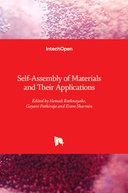Explore

Self-Assembly of Materials and Their Applications
0 Ungluers have
Faved this Work
Login to Fave
Self-Assembly of Materials and Their Applications provides foundational insight into self-assembly principles and supramolecular chemistry. It discusses coordination-driven self-assembly approaches, amphiphiles self-assembly, and nanoparticles self-assembly and their applications. Inspired by the nearly unlimited potential of nanomaterial-conjugated biomolecular structures, this book advances basic scientific knowledge of the synthetic and self-assembly methods that enable breakthrough capabilities for atomic-scale functional biomimetic objects, which make such bioinspired molecular platforms possible. The size-dependent optical, electrical, photochemical, and ionic properties of organized phospholipids with near-atomic-scale feature sizes are designed to provide high-density functional diversification, with nanometer-scale control for the development of biomolecular devices. For example, such a capability would drive bionano-heterogeneous sensor nodes, which are essential components of the Internet of Things. These structures also allow us to investigate the fundamental role of molecular confinement in biological sensing and corresponding signaling mechanisms.
This book is included in DOAB.
Why read this book? Have your say.
You must be logged in to comment.
Rights Information
Are you the author or publisher of this work? If so, you can claim it as yours by registering as an Unglue.it rights holder.Downloads
This work has been downloaded 90 times via unglue.it ebook links.
- 45 - pdf (CC BY) at Unglue.it.
- 45 - pdf (CC BY) at mts.intechopen.com.
Keywords
- Conservation
- Materials science
- Mechanical engineering & materials
- Nanoparticles
- Phagocytosis
- Silver
- surfactants
- Technology, engineering, agriculture
- water splitting
Links
DOI: 10.5772/intechopen.102269Editions

